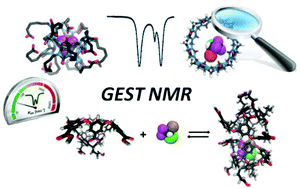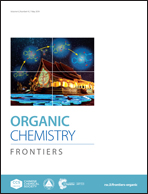19F-GEST NMR: studying dynamic interactions in host–guest systems
Abstract
Dynamic processes in host–guest systems, such as the exchange between bound and free guests, can endow such systems with unique properties and function. However, both the dynamic exchange and the relatively low concentration of a studied complex reduce the sensitivity and limit the efficiency of the currently available analytical tools to explore such processes. In this highlight, we present an NMR approach based on saturation transfer, termed GEST – Guest Exchange Saturation Transfer. This technique can be used to detect micromolar concentrations of complexes with the sensitivity of millimolar concentrations, thus offering the ability to amplify otherwise undetected signals in NMR spectra. In addition, by performing the GEST experiment and fitting the data using computational simulations, the exchange rate of free and bound guest and the fractional occupancy of the host can be extracted. We further present several examples of how GEST can be employed to extract important information from host–guest systems. This method can expand the NMR toolbox available to study dynamic host–guest systems in solution without any special expertise or dedicated hardware and can assist in developing more advanced host–guest systems that can be used for many applications, including in molecular and cellular MRI.

- This article is part of the themed collections: 2019 Organic Chemistry Frontiers Review-type Articles and In celebration of Julius Rebek’s 75th Birthday


 Please wait while we load your content...
Please wait while we load your content...